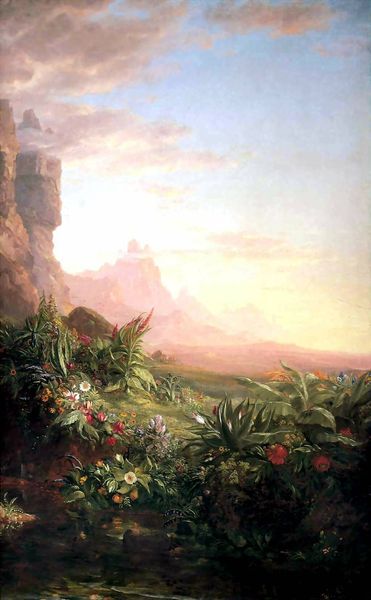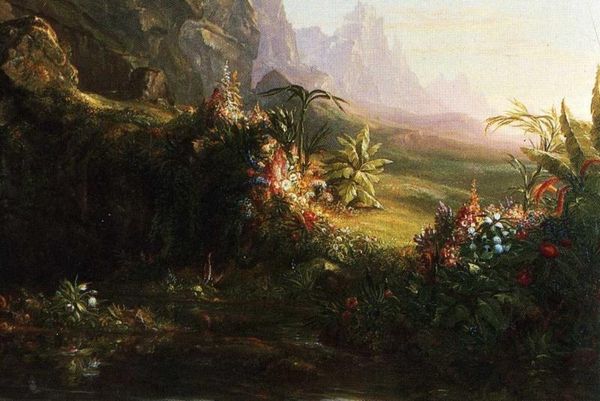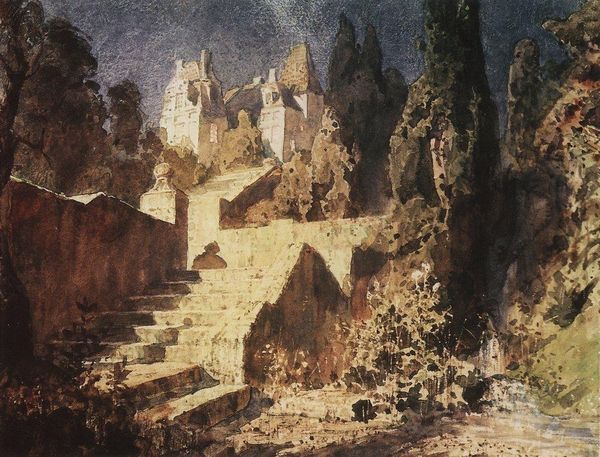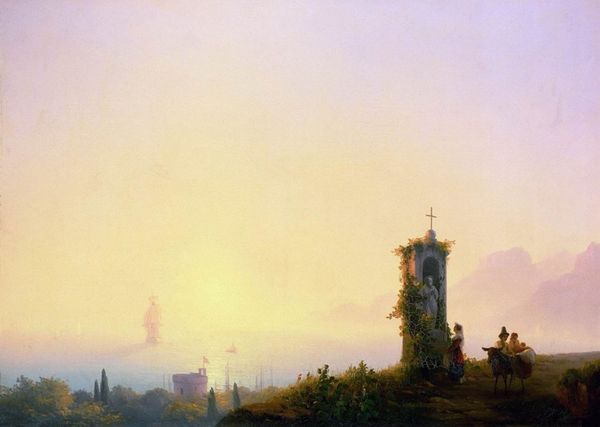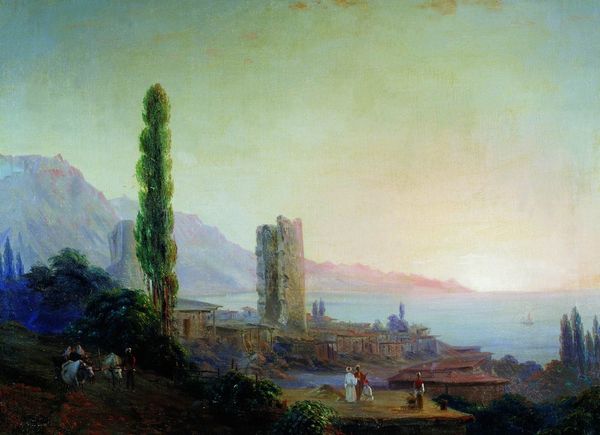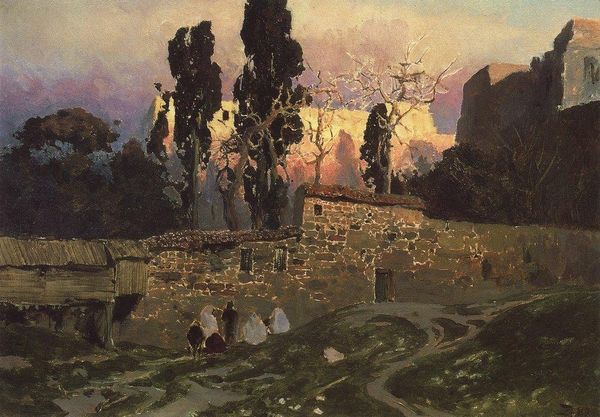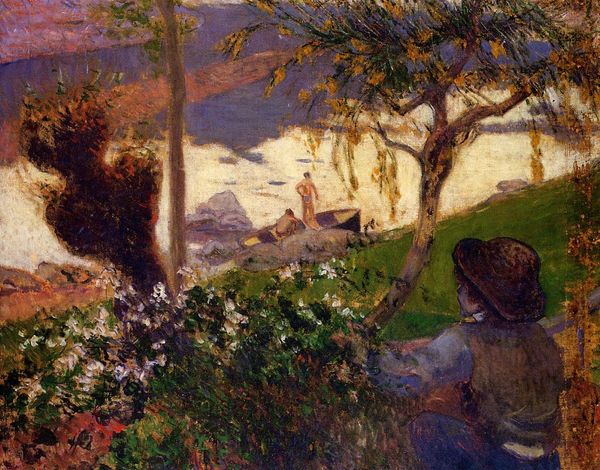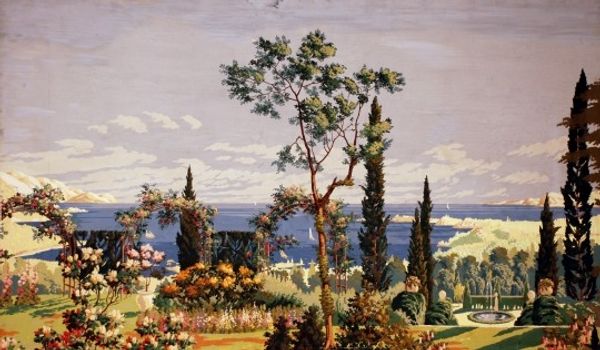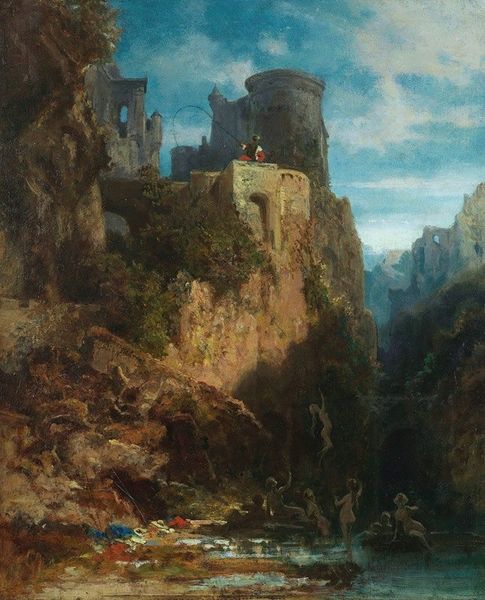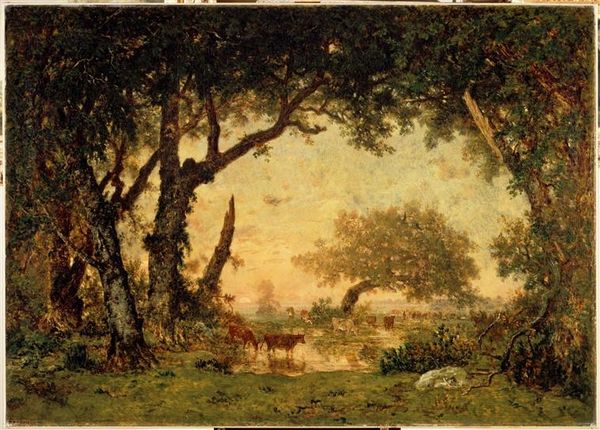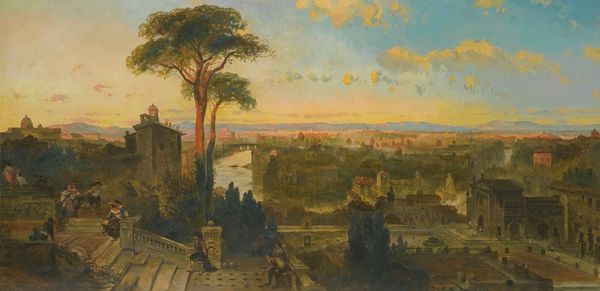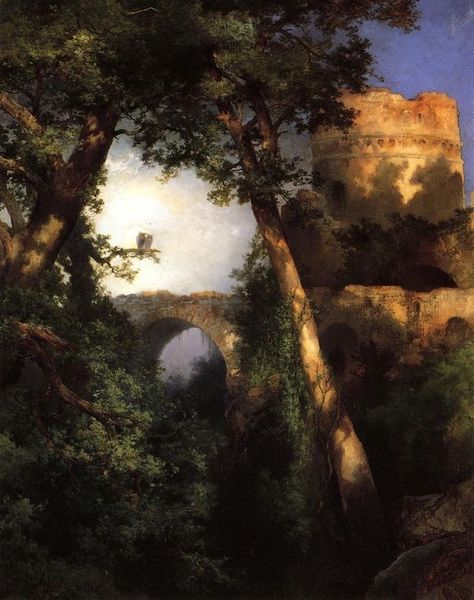
painting, oil-paint, fresco
#
painting
#
impressionism
#
impressionist painting style
#
oil-paint
#
landscape
#
impressionist landscape
#
fresco
#
orientalism
#
cityscape
#
realism
Copyright: Public domain
Konstantin Gorbatov created this oil painting, entitled Oriental Capriccio, sometime in the first half of the twentieth century. The scene is bathed in a soft, golden light, and its evocation of a distant, exotic place reflects a broader cultural interest in the "Orient" during that period. Gorbatov, who was Russian, likely never visited the locales he depicts in this and similar paintings. His art, in its embrace of Orientalism, participated in a long history of Western artists imagining the East through the lens of their own cultural fantasies. These fantasies were made possible by colonial expansion, and they often served to justify it. At the same time, Gorbatov’s choice of subject matter can be understood in the context of his own biography. After the Russian Revolution, he was exiled, and he may have turned to imagined landscapes as a way to express his longing for a lost homeland. The interpretation of art like this demands that we consider the complex interplay between personal experience, cultural trends, and political forces. Research into Gorbatov’s life, as well as the history of Orientalism in art, can help us understand the painting's meaning and significance.
Comments
No comments
Be the first to comment and join the conversation on the ultimate creative platform.
